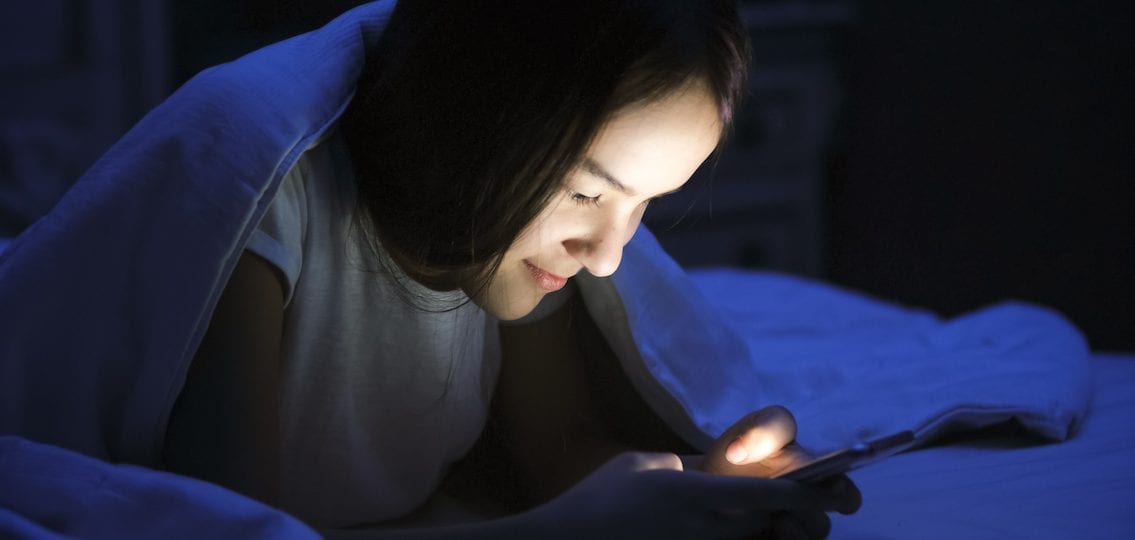Blue Light Filter And What It Does To You – Part 2

Blue light actually has many benefits. Blue light during daylight hours helps regulate circadian rhythms and provides small increases in alertness and cognitive function.
Blue light is one of the most energy-efficient and low-cost forms of light, which explains its pervasiveness in our everyday life.
Because of its efficiency and ubiquity, we are exposed to a higher concentration of blue light than ever before. But too much blue light can be a bad thing. Blue light exposure – especially at night – can disrupt natural sleeping patterns, which can leave us feeling tired in the morning.
Blue light can also contribute to digital eye strain, a temporary discomfort that is becoming more prevalent in our tech-driven society.
Digital eye strain comes from looking too long at electronic screens, such as smartphones, computers, e-readers, and televisions. Digital eye strain is especially common in individuals in office environments who spend a majority of their day working on a computer.
Some of the symptoms of digital eye strain include:
Sore, dry, itchy, or red eyes
Headaches
Sensitivity to light
Sore neck or shoulders
Blurred vision
Poor sleep
How to cut back on blue light in your life
To sleep better and avoid straining your eyes, here are some helpful habits to adopt.
It sounds obvious, but the first thing to do is limit the amount of screen time each day. It’s the simplest way to avoid large amounts of blue light and the digital eye strain that can result.
At the very least, avoid screen time just before bed because of blue light’s impact on the body’s circadian rhythm.
Also avoid using digital devices in the dark. Looking at a single screen in a dark room increases the likelihood of straining your eyes. One simple trick is to lower the screen’s brightness, because it decreases the blue light emitted from a device.
Experts suggest the “20-20-20 rule” to avoid eye strain for individuals who use a computer all day.
This rule says that for every 20 minutes spent looking at a screen, look at an object 20 feet away for 20 seconds. These frequent breaks lessen the strain on the eyes caused by computer screens.
An additional strategy is to use an app or program that filters blue light. Most modern cell phones have blue light filters (or night modes) already installed, such as the iPhone’s Night Shift or Samsung Galaxy’s Blue Light Filter. These filters automatically adjust after sunset to limit the amount of blue light being emitted by switching to warmer colors.
There are similar blue light filtering apps for desktops and laptops, such as F.lux, which work in the same way. These apps limit the amount of blue light for individuals who still need to work after sunset.
Blue light-blocking glasses are also increasingly popular in today’s tech-driven society. These glasses, which can be either prescription or non-prescription, have special tinted lenses that lessen the amount of blue light being absorbed by the eyes.
Support your eyes with a supplement
Blue light is everywhere, and with the increased reliance on digital screens, it is unavoidable. That’s one reason why Thorne is launching its reformulated Memoractiv™.
The new Memoractiv formula contains Lutemax® 2020, which supports the ability of the eyes to filter high-energy blue light, as well as providing support for cognitive function and mental focus.
In a 6-month study, 48 healthy subjects who spent at least six hours daily in front of computer or other blue screens were given either 24 mg of Lutemax or a placebo daily.
The density of the pigment in the macula at the back of the eye (which helps filter blue light) increased in the Lutemax group, as well as improvements in eye fatigue, sleep quality, and visual performance.
Memoractiv can benefit individuals who spend long hours looking at computer screens, healthy individuals looking to maintain a mental edge, or anyone seeking support for memory and focus.

